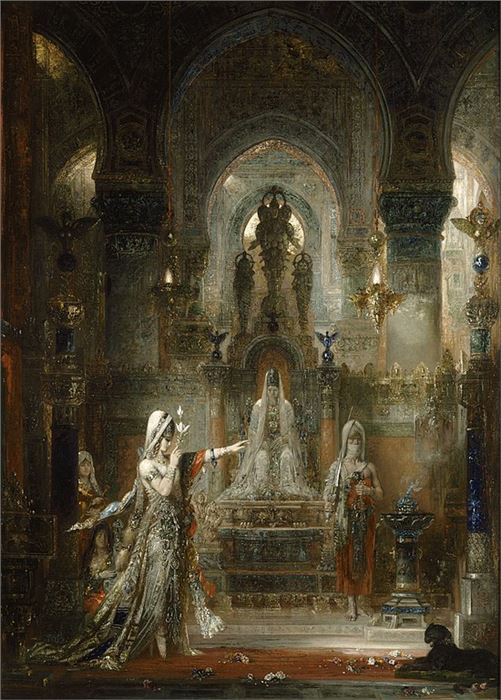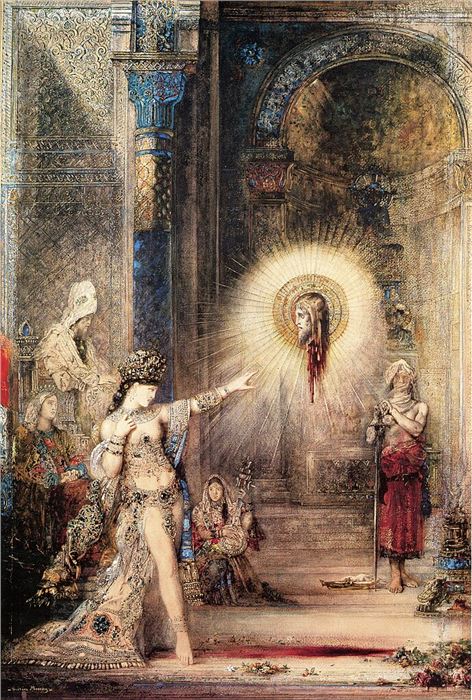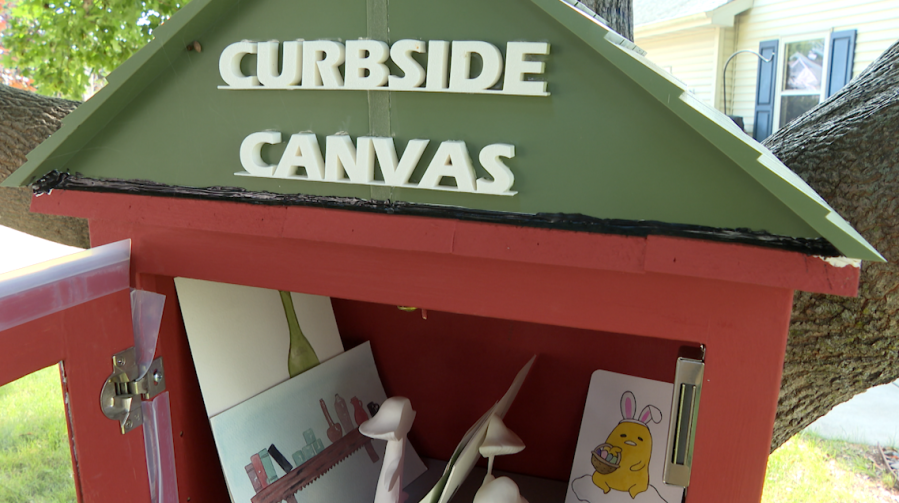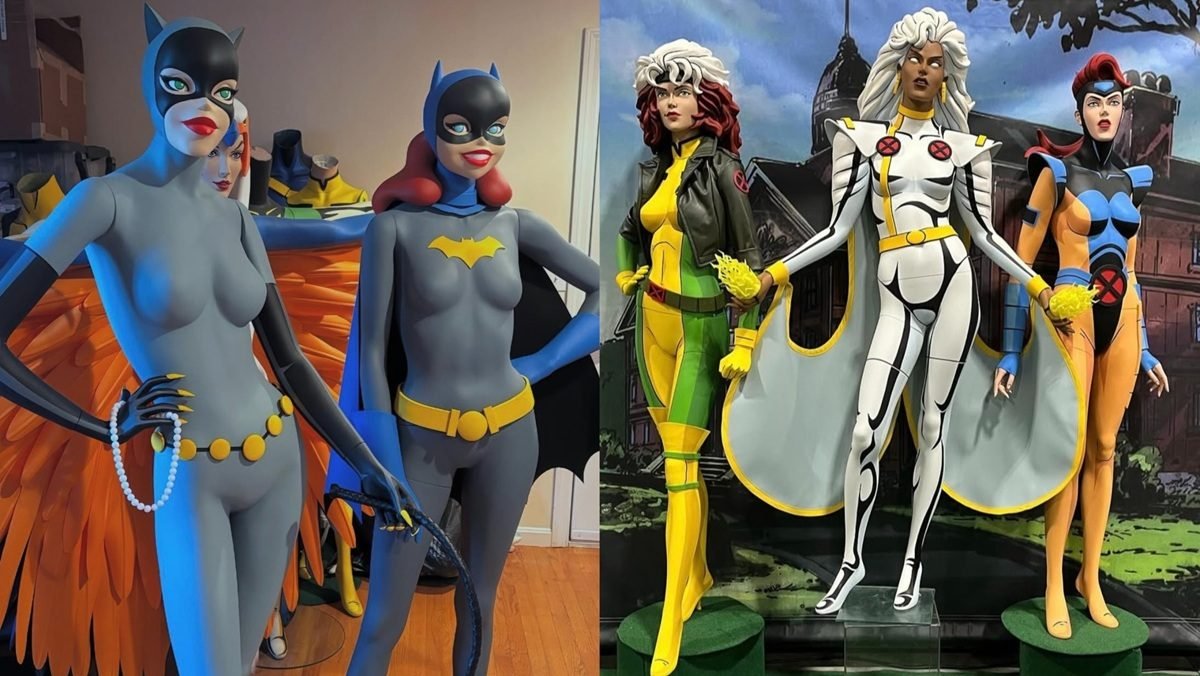In 1884, French author and art critic Joris-Karl Huysmans published the novel À rebours (in English: Against Nature), a tale concerning a character named Jean des Esseintes, a young aristocratic aesthete who decides to turn his back on the then-modern world and all of its banalities, and surround himself with only what truly and deeply appeals to the delight of his senses. Alongside meticulously chosen color schemes and furnishings, he also discerningly selects specific works of art from certain artists of which to hang inside his not-quite-sprawling sanctuary. Being no stranger to the art world, Huysmans included actual pieces in the work of fiction. Fantastical and unsettling, visceral and violent, eldritch and voluptuous, Des Esseintes’ carefully-curated collection serves a dual purpose beyond merely appeasing the ocular senses, and however disparate the pieces that comprise it may seem, there does exist a commonality that ties them together.
Gustave Moreau, Salome Dancing before Herod, 1876, oil on canvas, Armand Hammer Museum of Art, Los Angeles
The first pair of paintings that Des Esseintes presents in his collection, housed in his study on panels between bookcases, are both by Gustave Moreau, and share the same subject matter: Salome afore King Herod. The first of these pieces by the French artist is the oil painting Salome Dancing before Herod, 1876. In order to seduce her step-father into giving her whatever it is that she so desires, which happens to be the head of John the Baptist (at the behest of her mother), Salome dances as Herod sits enthroned in the background. Bedecked with jewels and holding a lotus stem aloft, Salome moves on pointed toes, head cast demure towards the flower-strewn floor, as her left arm is outstretched mid-dance. Herod’s eyes firmly follow Salome, belying the stoicism of his countenance. The piece exudes an intoxicating opulence, rich with burning incense, gilded lamps, and pillars, amidst the dulcet notes of a stringed instrument being played by a woman partly-disrobed.
Among all the artists he considered, there was one who sent him into raptures of delight, and that was Gustave Moreau. He had bought Moreau’s two masterpieces, and night after night he would stand dreaming in front of one of them, the picture of Salome.







